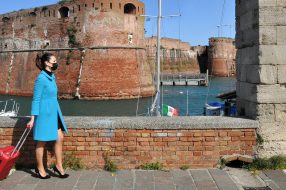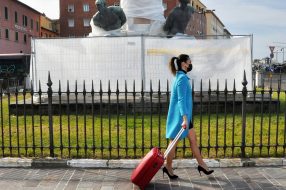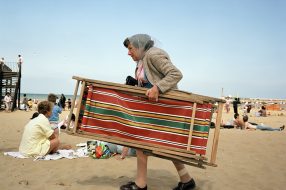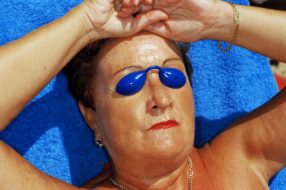FRONT PAGE
Tyrrhenian Ports Authority visits Laviosa Chimica Mineraria
Laviosa Chimica Mineraria was delighted to receive Luciano Guerrieri, the newly appointed President of the northern Tyrrhenian Ports Authority (Autorità del sistema portuale del mar Tirreno settentrionale) at their plant in Livorno. He was accompanied by General Secretary Matteo Paroli and by the ports Area Manager Fabrizio Marilli. The meeting has been the opportunity to…
Laviosa Chimica Mineraria was delighted to receive Luciano Guerrieri, the newly appointed President of the northern Tyrrhenian Ports Authority (Autorità del sistema portuale del mar Tirreno settentrionale) at their plant in Livorno. He was accompanied by General Secretary Matteo Paroli and by the ports Area Manager Fabrizio Marilli. The meeting has been the opportunity to focus the industrial presence of the company in the Livorno port area and the relevant mutual synergies.
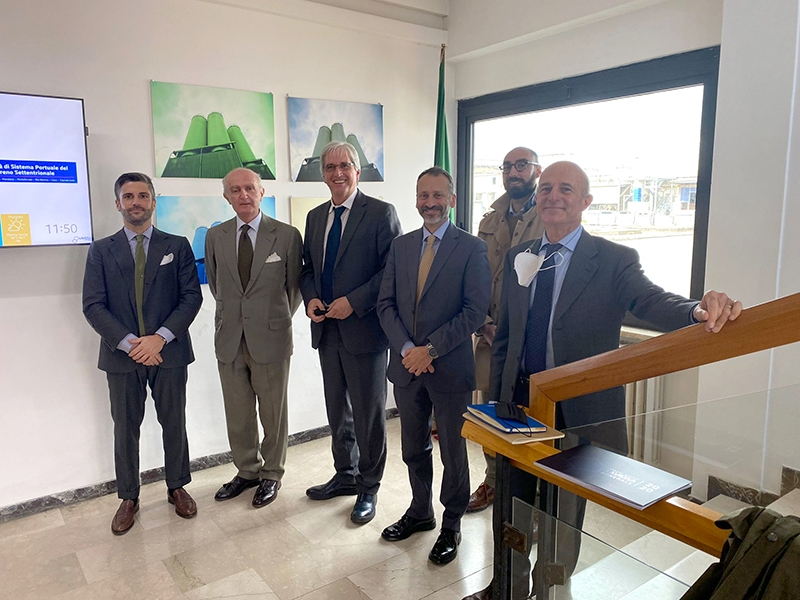
Meeting in Dubai
STRATEGIC MEETING IN DUBAI Dubai was the location for our strategic meeting with Laviosa India from November 30th to December 2nd this year. Both our CEO Giovanni Laviosa and India chairman, Umberto Laviosa were present. The delegation from India included Denis de Souza – country manager, Purvara Jadeja – operations manager, Shashin Shah – finance…
STRATEGIC MEETING IN DUBAI
Dubai was the location for our strategic meeting with Laviosa India from November 30th to December 2nd this year. Both our CEO Giovanni Laviosa and India chairman, Umberto Laviosa were present.
The delegation from India included Denis de Souza – country manager, Purvara Jadeja – operations manager, Shashin Shah – finance manager and Lakshman Kumar foundry sales development manager.
After the meeting, the group visited the Dubai EXPO.
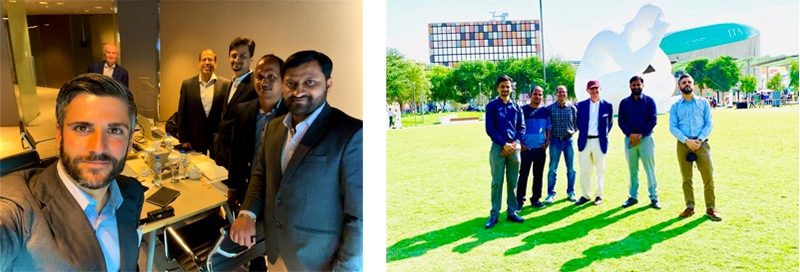
EDITORIAL
I truly believe we will travel again
Starting over surprises us like something new but in reality we often travel down roads we know, enriched today with a different awareness. I have never imagined that great changes or loses can leave things unaltered. And so, neither do I believe we will live as we did before. My wish is for us to…
Starting over surprises us like something new but in reality we often travel down roads we know, enriched today with a different awareness.
I have never imagined that great changes or loses can leave things unaltered.
And so, neither do I believe we will live as we did before.
My wish is for us to gain a heightened consciousness of what is important to us and first and foremost our affections for those we love and care for, those we sometimes neglect.
Without forgetting a greater respect for the world we live in: it does not belong to us, we are only handing it down and our responsibility is to pass it on to our children as harmless as we found it.
And finally, we need far-seeing eyes to give us the deepest possible vision of our future, eyes which do not close when faced with something they don’t like to see and which do not look to others to find solutions.

We will travel again
The title of the photographic exhibition organised by the Carlo Laviosa Foundation is my inspiration for a number of considerations. For my generation, the current health crisis is the only war we have ever fought and with mixed results, an uncertain future and the deepest hope of coming out of it as soon as is…
The title of the photographic exhibition organised by the Carlo Laviosa Foundation is my inspiration for a number of considerations.
For my generation, the current health crisis is the only war we have ever fought and with mixed results, an uncertain future and the deepest hope of coming out of it as soon as is possible.
Not a pessimist by nature, I do nonetheless believe that we should all learn to live with this new reality which is not just about statistics, however important they may be in giving us a global view of the situation. We have already managed to adopt a new style of life and some of our daily habits have changed, perhaps, unexpectedly for the better.
So let’s just stop for a second and think in a new light, in order that this war and the sacrifices it has caused us to make, might not be in vain.
We have introduced “smart-working” with all its complications, yet at the same time we have reduced carbon emissions across the planet. Many obligations which necessitated face-to-face presence before, have now been simplified leaving us more time for ourselves.
The world stood still for many months, each nation intent on resolving its own issues, battling personal and economic tragedy while living a social lockdown, never before experienced.
The aftermath will not bring us back to a pre-war reality and my hope is that “WE WILL TRAVEL AGAIN” in its broadest sense signifies a new, personal journey which each one of us will live thanks to a different awareness and more rooted values. All of us have become closer to our families and to our dearest friends, those who have been with us throughout, perhaps even just with a phone call.
Being locked down has left us with time to cultivate ourselves, finding moments which while less fun, have helped us and will continue to help us to grow.
We will travel again! This is what we are all wishing for and we will do it with the eyes and the hearts of those who are fighting a battle yet to be won.
Photo Gallery
We will travel again
This year saw the fourth edition of the Carlo Laviosa Foundation Photography competition: PHOTOGRAPHY AND THE WORLD OF WORK entitled “We will travel again: working in tourism between tradition and new forms of hospitality. Simona Manfredini, curator of the 2021 competition, shares her impressions with us. The guiding sentiment behind the 2021 edition of the…
This year saw the fourth edition of the Carlo Laviosa Foundation Photography competition: PHOTOGRAPHY AND THE WORLD OF WORK entitled “We will travel again: working in tourism between tradition and new forms of hospitality.
Simona Manfredini, curator of the 2021 competition, shares her impressions with us.
The guiding sentiment behind the 2021 edition of the competition Photography and the world of work, was that of hope, evident in the title We Will Travel again: working in tourism between tradition and new forms of hospitality.
In a context which is still marked by slow activity and an uncertain panorama scarred by a year and a half of lockdown, we asked the participants to propose portraits of a new cultural and economic Renaissance.
The reaction from the photographers was surprising: many from across Italy and from abroad picked up the gauntlet with irony and a sense of critique, confident in the work that will allow Italy to make a positive new start and allow us to begin travelling again, opening up and sharing our own visions of a world to come.
The prestigious and highly competent competition Jury for 2021, chaired by Letizia Battaglia, judged
341 images including photographic stories and single images, all worthy of recognition for their artistic interpretation.
The participation in groups by photographers is noteworthy with 10% of creative projects submitted to the competition being group efforts. 12% of submissions were from photographers resident abroad or from “non-Italians” living in Italy, showing the significance of the growing international identity of young people, not only photographers, who retain a strong and fertile connection to their origins, free from any form of moral provincialism.
The jury rewarded works communicating hope and belief in the future, highlighting those contributions from photographers which, making the most of their experiences of the pandemic, turned our attention towards sustainable tourism and respect for the environment, means of travel which take into account an awareness and love for the true nature of places as well as joy, light-heartedness, the pleasure of being together, trumpeting traditions and appreciating the art of Italian hospitality.
All the works submitted give us to understand that for younger generations, today image replaces the word and visual communication overrides verbal as the preferred means of exchange, comparison and expression of desires and discontent.
Fewer words and more images via any means of communication. Digital platforms are the public squares, social media is the street art and the most unexpected blends of cultural languages replace the public gatherings that belonged to the generations of the sixties and seventies in the previous century. What is certain is that the inclination to measure oneself in collective work is linked to the desire to share, for so long forbidden by the pandemic, but even more so, it reflects a freedom and a penchant for exchanging beyond frontiers.
National borders lose all meaning in the era of the internet taking on a more nuanced sense that Culture imparts through the graphic and the visual, of a dialogue without bounds.
Our desire is that this exhibition brings surprise, pleasure and food for thought as regards the world of work and that it be testimony to our hope for a better future.
Enjoy your journey!
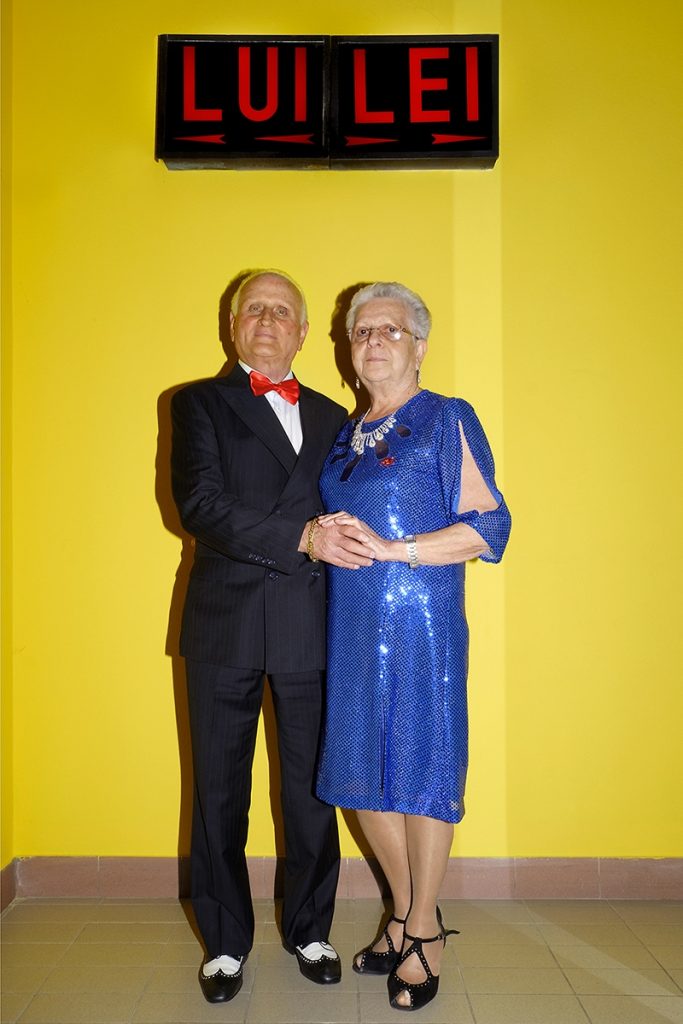
We received and are very pleased to publish a letter of thanks to Simona Manfredini, adviser to the Carlo Laviosa Foundation.
Dear Simona Manfredini,
I’m a photographer and photo-journalist working for Getty Images and we met on the occasion of the presentation to the press of the beautiful exhibition of Martin Parr’s work that curator Serafino Fasulo was able to bring to Livorno with such determination and care (in the true sense of the word), despite this post-pandemic period.
For a long time now, I have wanted to thank all of you at the Carlo Laviosa Foundation for your passionate dedication to photography.
A rare if not unique commitment to this art in a provincial town: Livorno, the city I have lived in since I was a little girl, which has welcomed me and where I began my work as a photo-journalist; a city where photography has always been loved and created. Perhaps it is because of the particular aesthetic sense of the people of Livorno, because of the light or because of the possibility and their love of showing off bodies and other objects that it has always seemed to me that photography is appreciated more here than in other cities. Transversally.
The first time I read in the local press that the Carlo Laviosa Foundation was dedicated to photography, I was very surprised.
Normally, foundations are dedicated to other arts; painting, music, sculpture, architecture, poetry or dance.
Yet, that this art might become the focal point of an entire foundation in a provincial Italian town, I would never have guessed. I wondered at this choice; I imagined a family with a member who was mad about photography or a happy meeting of skills giving this art a new opportunity. Either way, this was good and promising news to me. An original, exceptional and meaningful idea. Photography is popular, far-reaching and beloved, yet the organisation of exhibitions remains almost always within the confines of festivals and big events. To bring prestigious photography to the heart of a whole provincial town was something inspired and marvellous, to me.
Congratulations on this exhibition and for past projects that you have given to us and exhibited in various forms.
And my wish is that you will remain attached to this art, which is so central to our everyday lives, today.In the infinite sea of images we all produce, share and look at every hour of every day, a framework for projects and reflexion is essential.
My thanks go to you all at the Carlo Laviosa Foundation for the work you are doing and the beauty you are creating,
Kindest regards,
Laura Lezza
Our sincere thanks go to Michele Lezza and the 8mmezzo Association who wanted to contributed to the exhibition “We will travel again” by installing the Video Space with enthusiasm and free of charge. Here, for the whole period of the exhibition (July 3rd to September 5th 2021), visitors were able to enjoy the showing of “Una marea di analogica” (A Sea of Analog), a video on holidays and working in tourism in Livorno in the 60s and 70s.

The clips were created from ad hoc images in the 8mmezzo archives and edited by Michele Lezza; the soundtrack was made to measure by musician Di Maggio Baseball Team, with graphics by the artist Umberto Staila.
8mmezzo’s project (www.8mmezzo.it) aims to bring the old films (and more) abandoned in so many attics, back to life. Founded in 2014, the Association is a young, innovative and vital reality of cultural entrepreneurship in Livorno.
With an archive of over 100,000 metres of unedited film, today 8mmezzo is a national point of reference for recovering, digitizing and archiving old, 8mm, Super 8mm and 16mm film.
Photo Gallery
LIFE’S A BEACH
Who is Martin Parr
Life’s a beach
La Fondazione Laviosa porta a Livorno Martin Parr, uno dei grandi della fotografia contemporanea. Who is Martin Parr – Life’s a beach A year and a half later than planned, Martin Parr’s moment has finally arrived. The exhibition will open to the public from 25th September to 12th December 2021 at the Granai di Villa…
La Fondazione Laviosa porta a Livorno Martin Parr, uno dei grandi della fotografia contemporanea.
Who is Martin Parr – Life’s a beach
A year and a half later than planned, Martin Parr’s moment has finally arrived.
The exhibition will open to the public from 25th September to 12th December 2021 at the Granai di Villa Mimbelli in Livorno.
It took determination not to give up on this event threatened by the pandemic but in the end the Carlo Laviosa Foundation and the municipality of the Comune di Livorno made it happen. Recognised as being one of the world’s greatest contemporary photographers, Martin Parr (born in 1952) gives us a very non-conformist view of an extremely conformist world. For over forty years he has been photographically probing the social transformations of his native England and extending his gaze across a globalised planet Earth.Witness to the socio-cultural divisions of the Thatcher era, to the rise of mass tourism, the arrival of industrialised food, the standardisation of behaviours and lifestyles, Martin Parr tells a tale through a critical eye and with caustic irony without ever placing himself above the system yet denouncing the weaknesses to which he himself is party. And perhaps it is feeling he is part of a world which in its crudest representation touches on the sarcastic and the grotesque, that is at the heart of Parr’s critical, public and commercial success.
He has often been the subject of his own photos, not sparing himself the self-irony which in Autoportraits makes him the central figure of compositions not so far removed from a National Populist style that we might encounter in certain homes, especially of the older generation, where the souvenir is displayed amongst objects of disparate origins: family keepsakes, street-market trinkets, religious icons bought from places of worship, floral offerings and inevitably, photographs.
In the 90s, Parr became part of the prestigious agency Magnum, founded in 1947 by Robert Capa, Henri Cartier-Bresson and David Seymour, to mention but a few of the renowned names who joined it to defend photographers’ rights.
Known for its journalistic approach to photography, seen in the rigorous black and white photographs taken by generations of great photographers, the agency may not appear to be the ideal bedfellow for an artist who has made saturated colour, daylight flash and digital photography his signature.
The contradiction only becomes apparent because Martin Parr is the witness of a society who happens to be totally at ease within this artefact, in the plastic-like foods, in the unnatural hues.
He is the reporter of a world which has replaced landscape with representation, reality with dreams, a world which celebrates the synthetic and is ready to breathe packaged air.
Parr, witness of his time, is a natural associate of the tradition of photo-journalism with something more, often absent in the work of great photo-journalists, distinguishing him as both the observer and the observed, behind and in front of the lens at the same time.
“Apocalyptic” and “integrated”, judge and accused, Parr brings together the weaknesses of contemporary society while recognising the good of scientific development, all served with a generous dose of humour combined with the humility that comes from his impression that he is part of an episode of the “Truman Show”, at once amused and horrified. Parr’s subjects do not tell tales of war, nor of mass migration or natural disaster; the classic photo-reporter subjects between eye-witness testimonial and artistic expression. He is the chronicler of a vision in which the ordinary, everyday object and trivia bring social classes together, exalted in free-time and evident in the clichés that consumerism imposes, signs of a humanity dressed up in often vulgar, ridiculous adornments; a humanity which has created a caricature of itself, revealing itself in summer nudity on beaches which well before clothes, relieves us of our modesty.
“Life’s a beach”, or might one say “Life’s a bitch”, exploding in the summertime, bodies strewn in positions which would be unthinkable indoors or during working hours. “Life in underwear” allows for strangeness, awakening the secrets silenced by clothing, transforming them into ostentation and posturing endowed with an array of adornments: hats, glasses, bandanas, sarongs, makeup and coloured drinks, all symbolising free-time as a moment where we lose our sense of self-control and of what is reasonable.
If photography mirrors reality, the exhibition “Life’s a Beach” finds its missing piece of the mosaic in Livorno, or better still, its missing image, for it is in summer that the “anarchic” spirit of our city is aroused. I have often observed the summer shift in the bodies of the people of Livorno: the hips slant forward 15°, the feet are positioned at 10 to 2 and don’t walk but drag across the rocks or the Lido concrete. Bumping into acquaintances, well before saying hello the first thing we say to one another is, “have you been for a dip?” I answered “no” – once. In my interlocutor’s face I could see a mix of astonishment and consternation; they uttered a heartfelt and pained “oh, what did you do, then?”. I haven’t done it since. Now I always say “yes”. And so it seems to me that the encounter between Martin Parr and Livorno could be the start of an explosive fusion as the city for so many months of the year becomes a seaside resort, in the vein of the colourful digressions of “Martin’s beaches” possessing the ability to show itself off while observing itself, to be both on stage and in the stalls, text and critique, actor and spectator, a double role arising from a quantity of self-irony rarely seen in certain other latitudes. The irony of those who understand “life’s a bitch”. The people of Livorno are all a little bit Martin Parr.
Photo Gallery
Life’s a beach, the exhibition
Serafino Fasulo, responsabile della mostra, ci racconta. It took patience and perseverance to finally inaugurate the exhibition “Life’s a beach”, 56 photos of varying format which the photographer Martin Parr dedicated to beach life. Planned to open in the Spring of 2020, the exhibition was pushed back, month after month due to the Covid crisis….
Serafino Fasulo, responsabile della mostra, ci racconta.
It took patience and perseverance to finally inaugurate the exhibition “Life’s a beach”, 56 photos of varying format which the photographer Martin Parr dedicated to beach life.
Planned to open in the Spring of 2020, the exhibition was pushed back, month after month due to the Covid crisis.
It was tough to give it all up when we were already on the home-straight but the dramatic events pushed our disappointment into the background.
Yet today, the exhibition is finally opening its doors at the Granai di Villa Mimbelli in Livorno where in the park, the public is gathering and growing in numbers by the minute.
It is for the Mayor of Livorno Luca Salvetti and Giovanni Laviosa, President of the Carlo Laviosa Foundation, to “cut the ribbon”.
The collaboration between the Town Hall and the Foundation began under a previous administration and so it’s the first time that Luca Salvetti is participating in an event born of the union between the two and his words underline the importance of the synergy between public and private while Giovanni Laviosa highlights Martin Parr’s extraordinary irony as he tells the story of life on the beaches, catching people as they strip off their modesty in the four corners of the planet.
Following greetings from Andrea Holzherr, exhibitions director of the prestigious photo agency Magnum who kindly lent us “Life’s a beach”, the next to speak are councillor for culture, Simone Lenzi and yours truly, Serafino Fasulo in my role as curator of the exhibition.
In the meantime, the public is filling the park in front of the Granai and begins entering after security checks carried out by the staff from the cooperative Agave, to whom we offer our sincere thanks for a job done with care, attention and skill.
Visitors can enter in groups of thirty, slowly walking through in order to give everyone the chance to see the exhibition.
Many exit declaring “I want to go back and take my time”, many aren’t from Livorno, many are young.
Through photos covering around twenty-five years from 1985 to 2010, Martin Parr photographed an ever more standardised world, human beings of every ethnicity losing their modesty as they strip down to their underwear, allowing for an image of themselves as dishevelled, touching on the grotesque. Parr is aided by a stylistic approach to his reportage which uses daylight flash and saturated colour close-up to impart a certain dystopia to his subjects, linking people to a “plastic era” and making them both the subject and the object of the tourism industry.

Livorno October 10th 2021, Life’s a beach is in its third week, the queues at the entrance have not diminished and the number of young visitors has grown exponentially, demonstrating just how fresh Martin Parr’s photographic eye is, never pedantic, always sharp and stimulating.
Life’s a beach and yet it also double-crosses: beach and bitch.
But the language of Art never lies; bringing people together and making communication across generations and populations possible.
Serafino Fasulo
Curator of “Life’s a beach” by Martin Parr
Young entrepreneurs
We were delighted to welcome a group of young business people from Confindustria to our Martin Parr exhibition. Our curator Serfino Fasulo was their expert guide, commenting each work.
We were delighted to welcome a group of young business people from Confindustria to our Martin Parr exhibition.
Our curator Serfino Fasulo was their expert guide, commenting each work.
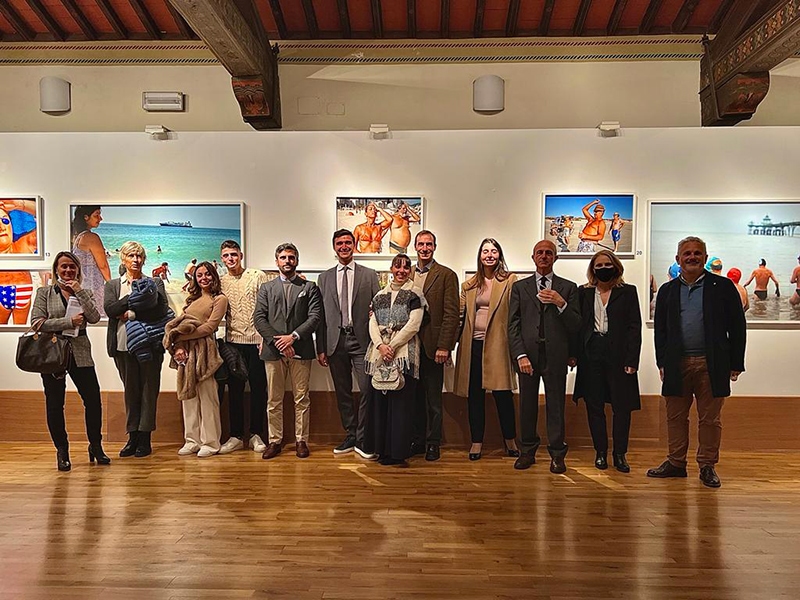
THE COLUMN THE PLUCKY WOMEN OF LIVORNO
Getting to know them in order to build a better world
This column comes out of our curiosity for the women of today and those of the past, who have left their mark, often little recognised, on the life of Livorno. From their stories new stories are born, in their footsteps we can make a new journey, a new way of existing in the world of work, in culture and in society.
by Sandra Mazzinghi
This column comes out of our curiosity for the women of today and those of the past, who have left their mark, often little recognised, on the life of Livorno. From their stories new stories are born, in their footsteps we can make a new journey, a new way of existing in the world of work, in culture and in society.
by Sandra Mazzinghi
Olimpia Vaccari
A life dedicated to the love of Livorno – her personal story and culture.
Olimpia Vaccari graduated in literature at the University of Pisa with a dissertation on the History of Trade and Navigation. Subsequently, she was awarded the title of Ph.D at the Faculty of Literature of Cagliari University, presenting a thesis entitled “Livorno: the birth of a port.” Over the years, she has carried out research and taught at the Faculty of History of the University of Pisa for the Chair of Medieval History, Trade and Maritime History of Professor Marco Tangheroni. Today she is the executive coordinator of the Centre for Historical Mediterranean Studies at the University of Pisa. Olimpia Vaccari has never stopped studying and learning and has contributed to numerous publications with Marco Tangheroni, Furio Diaz, Franco Cardini and Folco Quilici and along with Lucia Fatterelli Fischer she has edited a book on the history of the women of Livorno. Since July 2020 she has been President of the Livorno Art and Culture Foundation.
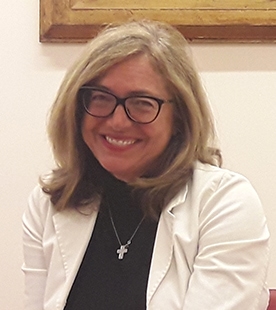
Throughout our encounter in the rooms of the Livorno Foundation which houses the permanent collection of works from the Divisionism period in Tuscany, I am sitting in front of the luminous painting by Benvenuto Benvenuti “La casa in Maremma” (The House in Maremma) with the open windows of the house looking at me, wide-eyed, as I talk with this friendly, fascinating, cultivated and sharp-witted lady whose enthusiasm and passion convey a desire to study History and Art and whose discourse pushes you to want to understand more about Livorno and its port, its past and present, transformations and little-known culture.
She asks me to say “tu” when we speak (the informal way of addressing someone in Italy) and I appreciate this approach straightaway. Given her position at the Foundation and at the University, I had imagined I would meet a woman who was a little cold and reserved but on the contrary Dottoressa Vaccari has a way which is so welcoming, it throws me.
D: I begin by delving into her childhood…what were you like when you were little, Olimpia?
“I loved reading stories and tales. I loved reading from a very young age and growing up I became passionate about the classics which I still read and re-read today – even on my mobile”.
D: What games did you play?
“I used to play a lot with my brother, mainly boys’ games, like adventure and escape. We were always stimulated by our father, a man with a curiosity for life to the point of being almost bizarre, who always got us trying new and unusual experiences. Once he bought an enormous tent from “Stadium” (the historic sports shop in Livorno) and we left for Palermo, without ever having tried to put it up. We had such fun. Another time, he brought us boots and a hat so we could go horse riding or we went skiing at Christmas, always leaving early so we could see the snow start falling”.
Olimpia is the daughter of the artist Piero Vaccari, an important name in twentieth century art in Livorno.
And the times which light up Olimpia’s face even more are those where she remembers her father “Piero the rebel” (as Mario Borgiotti described him) taking her with him to the artists’ ateliers in Livorno, to the great Renato Natali and Mario Madiai (the Granai di Villa Mimbelli in Livorno welcomed his beautiful exhibition last summer “Tracce di memoria” or “Traces of a memory”). She recalls the numerous artists who frequented the Vaccari household, charmed by her father’s extrovert and turbulent personality as well as by the rather strict welcome and manners of her stunning mother Luciana.
Creativity and intellectual discipline, obvious unruliness and a deep respect for others, freedom of expression and moral rigour; all elements of an intense human affection and warmth which animated the Vaccari household throughout Olimpia’s childhood, leaving its traces in her sunny disposition.
D: And what about studies?
“My studies didn’t follow Art but rather History. I wasn’t crazy about science even though I went to a science secondary school. That’s where I made a very important acquaintance, the history and philosophy teacher Mr. Romualdo, who introduced me to the world of History. The rigour of historical research was clearly what I needed to free myself from the exuberance of the world of art, where I had grown up and to find my own way and my own personal balance. So, I went on to study History at university as well, where I met the people I’m honoured to describe as my “mentors”, two figures who were crucial in my life as a student and as a university researcher: Furio Diaz and Marco Tangheroni. Thanks to them, I realised that I wanted to continue working at university but in research rather than as a lecturer”.
D: Why research in particular?
“Research is open, you never know where it will take you…”
D: In which field?
“In port activities, Mediterranean-sea research and the city of Livorno.”
D: Do you do your historical research alone?
“Yes, I like to work in the library and in the archives.”
D: From archives and researching for your books to President of the Livorno Foundation for Art and Culture. Did you feel a disconnect?
“Yes, to begin with. The work for the Foundation is for others (festivals, exhibitions, conferences and shared initiatives) but I love what I do because it’s for my beloved Livorno”.
Despite living with infinite stimulation, daughter of a brilliant and free-wheeling artist, she created her own rules, achieving remarkable professional success.
And I would say, she has also been successful in her private life. Married at the age of nineteen, Olimpia still talks of her husband with great emotion and love.
She mentions him often during our interview, and I bring her attention to the fact because it’s strange that a woman with such important positions doesn’t focus solely on herself and on her public role. She gives her husband, at her side for over forty years now, a lot of importance.
I ask her to share the secret of such a strong and long-lasting relationship, evident in her every word and in the look in her eyes, “Respect, rules and growing together”, she replies. They met when Olimpia was just a young girl.
Together they had a daughter, Alessia; a young, expert graphic and web designer. And when Olimpia writes a book, she often asks her daughter to collaborate.
Olimpia Vaccari is a beautiful woman and she always has been. Paying attention to her physique and to her diet, she has the body of a fashion model. In fact, she tells me, she was a catwalk model for a while and was tempted for a moment to “deviate” from what was to become her job of work because it was fun and she was earning good money for every catwalk show. She spent the money on clothes, which she loves and sees as a means of expressing our culture and who we are. She remembers that her mother would always dress at the famous store Palinuro, where she always bought the most splendid outfits.
At breakfast she reads the daily press, starting with the local papers: Il Tirreno, la Nazione, Livornosera, Quilivorno, moving on to the national news. She likes to read the daily chronicle in the newspapers. It’s history in the making. Olimpia’s cup of tea, we understand. And so starts her intense day of work at the Livorno Art and Culture Foundation, researching and book writing. In her room there are marine-themed works all around and in front of her desk is a picture by Giovanni March entitled “Barche-cantiere sul Pontino” or “Boats in the shipyard at Pontino”. She says it inspires her.
Even if I already know the answer, I ask her: how big is your love for Livorno?
It’s immense”, she answers.
She tells me that in April 2022, there will be a Divisionism exhibition of Vittore Grubicy De Dragon (curated by Aurora Scotti and Sergio Rebora, the finest scholars of this period) and she takes me to admire some of his works and a fantastic sculpture by Adolfo Wildt.
I’m happy to have caught a preview of the pieces of such an important exhibition and the same feeling of curiosity is still with me as I am about to finish writing up my chat with Olimpia Vaccari.
I feel like I am the spokesperson for the people of Livorno at this moment and I want to ask Olimpia Vaccari to always do as much as she can for this city which after a year immobilised because of the pandemic, has finally lived another vibrant summer, overflowing with events, such was the desire to begin again.
D: And what does Olimpia Vaccari do in her free time?
“I like to drift too, I love to stay home and do nothing. I need to stop every now and then.”
Stop if you want, every now and then Olimpia. But not for too long. Livorno needs women like you!
Books – an alternative journey
We dedicate a photographic exhibition to the theme “We Will Travel Again”, the reflection of our wish to see the end of a noxious period of our recent history. Yet, I would like to add that many of us never stopped travelling, neither will they ever, for as long as they are closed in an…
We dedicate a photographic exhibition to the theme “We Will Travel Again”, the reflection of our wish to see the end of a noxious period of our recent history.
Yet, I would like to add that many of us never stopped travelling, neither will they ever, for as long as they are closed in an attic full of books.
Travel is a relationship with the outside, perpetuated over millennia through the determination to discover, through the curiosity for anything distant and different, outside what we know.
Only recently has travel become a widespread phenomenon, simulated by holidays -for leisure, culture and sometimes for self-discovery.
Moreover, travel is also a comparison, a challenge and an exploration; the thirst to discover what we don’t yet know, a journey of the mind.
The pioneer who became the archetype of travel itself is Ulysses whom Homer subjects to every sort of adversity during his epic, twenty-year-long return home.
Of those of us who have read the epic poem dedicated to Ulysses, who could say they did not travel?
A book is a journey, some are demanding, others effortless, a means of escape or of relaxing the mind. The gift of every written page is its ubiquity, we can be in New York in the morning and just a few hours later, in Gubbio.
The mind wanders, abandoning itself to boundless fantasy; encountering people, places and situations which sometimes steal our hearts and other times have us fleeing as fast as our legs can carry us.
For centuries, people have travelled reading and listening to stories.
How many of us who have come across the “Pirates of Malaysia”, don’t have the Malaysian visa stamp on our passports?
And so did Salgari discover the mysteries of the jungle in books and the seas of the Caribbean in atlases. It is said that his only sea journey was on the Adriatic from Veneto to Puglia and the saying “Writing is travel without the bother of the luggage” is attributed to him.
It is not by chance that he is called “the immobile traveller”.
Nowadays, we are experts in organising luggage and travel is part of our everyday lives.
We are immensely lucky but let’s not forget to pack a good book in the suitcase.


